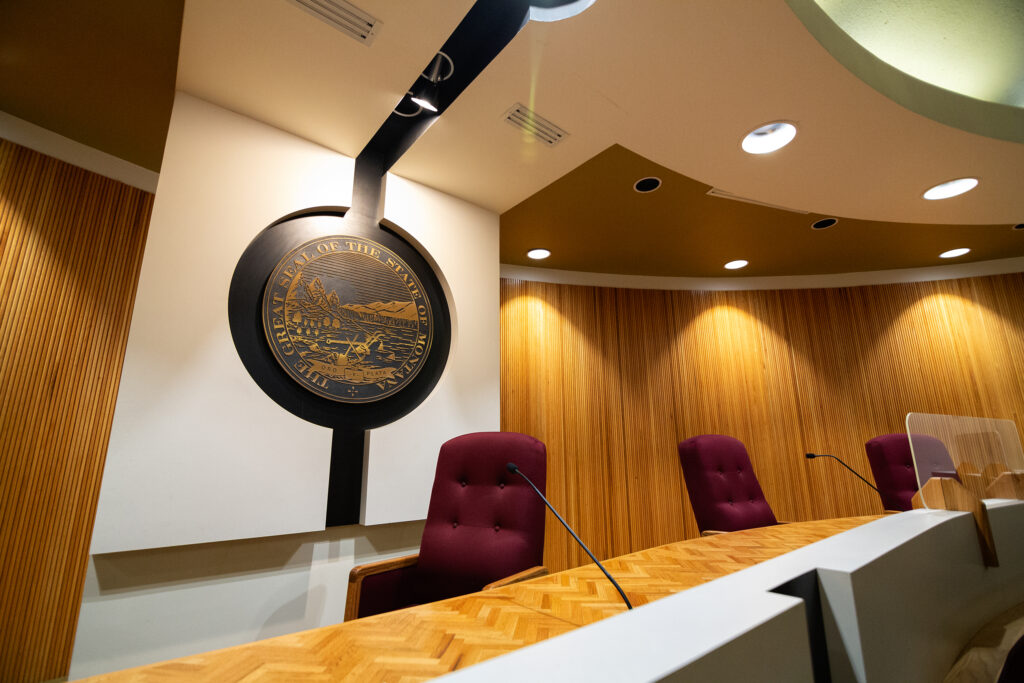
The Great Seal of the State of Montana in the Supreme Court (Photo by Eric Seidle/ For the Daily Montanan).
While Montana Attorney General Austin Knudsen has called the state’s top court “ludicrous,” and the incoming Montana Speaker of the House Brandon Ler, R-Savage, was elected, in part, by vowing to strike back against the “radical overreach” of the Montana judiciary, most of the people who use the courts have a decidedly different opinion.
Judges and court staff who work everyday in the state courts took a biennial anonymous poll put out by the state court system, and the results showed than nearly 9-in-10 of the respondents approved of the job the Montana Supreme Court is doing.
John Mudd, the executive director of the Montana Bar Association, said the survey was consistent with previous years and showed that the overwhelming majority of those who work with the courts most often see the state’s highest court as both efficient and largely consistent and clear in rulings.
“Lawyers are used to winning and losing all the time,” Mudd said. “And what they want is a fair shot at making their argument to an impartial judiciary. They want a fair shake.”
The survey, which had 10 questions, asks about the Montana Supreme Court’s published opinions, how well it treats attorneys and clients, how well it explains its decisions and how timely those decisions happen. The questionnaire, which has been consistent since 2008, also asked how attorneys and judges feel about the procedures for attorney discipline, something that has been in front of the public as a historic hearing in which Knudsen faced 41 ethics charges and the state’s Commission on Practice recommended suspending his law license for 90 days.
Eighty-nine percent of the respondents said they felt that the sanctions imposed are proportionate to the attorneys’ misconduct.
The state also published the results of the prior surveys and the results. During the 2024 survey, the number of respondents who agreed that the Montana Supreme Court’s disciplinary process is fair set a record high of 90%.
He said that demonstrates that there’s a buffer between the political aspect of the court and the actual functioning of the courts.
“They’ve established a system where there is the maximum independence, and not going for a partisan tribunal,” Mudd said. “It creates a buffer away from politics and what we’ve seen with this survey has borne that out.”
Mudd said the original process of surveying attorneys and judges started as a result of frustration and dissatisfaction over how long cases were taking to decide. Mudd said that the court has worked hard to improve its decision time, and also how it interacts, and the results show that the bar has largely responded positively to those changes. For example, in 2008, just 39% of the respondents said that the Montana Supreme Court issued responses in a timely manner, and since then that has risen to 85%.
“When we started this, there was a feeling that the court had become bogged down and speed was an issue,” Mudd said. “While you can look at the national statistics and see that Montana needs more judges, we still see that attorneys think that courts are efficient and well run.”
The survey response rate was 35%, lower than during other years, and lower than the high of 47%.

